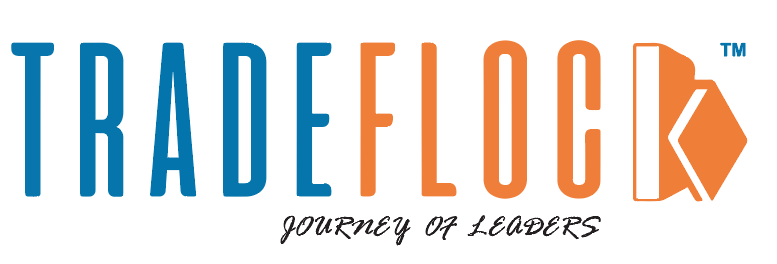Imagine your business as a road trip. You’ve got your destination, your vision, and a great car. But what about the GPS? Without it, you’re driving blind, hoping you’re headed in the right direction. With it, you have real-time directions and shortcuts to get where you want to go faster and more efficiently.
In today’s market, where consumers have endless options, customer feedback is more important than ever. Understanding your customers’ thoughts, needs, and frustrations gives you the power to build a product or service that truly resonates with them. Let’s explore what makes customer feedback so valuable and how you can use it to drive growth.
Table of Contents
The Value of Customer Feedback: Beyond Star Ratings
Customer feedback is more than a star rating or a quick comment; it’s the voice of your customers, showing you what’s working and what’s not. When you start actively listening, you’ll find your customers are telling you exactly how to improve.
Why Does Customer Feedback Matter?
Shapes Product Development: It’s hard to know exactly what your audience wants until they tell you.
Improves Brand Reputation: Customers who see you acting on feedback often become brand advocates.The best part? Customer feedback can also give you a competitive edge, letting you stay ahead of trends and industry shifts.
Top Customer Feedback Tools You Need to Know
Gathering feedback can seem daunting, but the right tools make it easy. Here are some top customer feedback tools that can streamline the process:
SurveyMonkey: Ideal for detailed surveys, letting you ask questions on customer satisfaction, feature requests, and more.
Qualtrics: A powerhouse for analysing customer insights and tracking satisfaction metrics.
Google Forms: For quick and easy feedback collection without breaking the budget.
Zendesk: Excellent customer service, allowing you to log and analyse feedback within support interactions.
Trustpilot and Yelp: Let your customers provide feedback publicly, building social proof for your brand.
Each tool has its unique strengths, so explore a mix of them to find the ones that best suit your business.
Making Sense of Customer Feedback: Analysing for Actionable Insights
Once you have feedback flowing in, it’s time to make sense of it. But here’s the thing: not all feedback is created equal. Some comments are vague, while others are goldmines of insight.
Look for Patterns: If multiple customers mention the same problem or request, take note! These patterns reveal areas that may need immediate attention.
Prioritise Feedback: Not all feedback needs action. Identify what will impact your customers the most and start there.
Quantitative vs. Qualitative: Quantitative data (like survey ratings) gives you clear trends, while qualitative feedback (like reviews) offers depth and context.
Consider the Source: Feedback from loyal customers is valuable, but don’t overlook insights from new or inactive customers.
Reviewing feedback reports from your customer feedback tools regularly will help you spot trends and act on them promptly.
Turning Feedback into Action: Strategies for Real Change
So you’ve got the feedback; now, what’s next? Too often, businesses collect insights but don’t act on them. Here’s how to ensure your feedback doesn’t sit in a digital drawer.
Steps To Act On Customer Feedback
- Update Your Products or Services: If customers are asking for specific improvements, prioritise them. Updates show customers you’re listening.
- Empower Your Team: Share relevant feedback with different teams, from customer service to product development. Empowering them to act on insights creates a stronger customer-centric culture.
- Create a Feedback Loop: Let your customers know when you’ve made changes based on their input. Announcing updates and improvements builds trust and encourages more feedback.
- Celebrate Successes Publicly: Did you enhance a feature due to popular demand? Tell people about it! Sharing the feedback journey publicly boosts brand loyalty.
Closing the Loop with Customers: The Power of Follow-Up
One often overlooked aspect of customer feedback is follow-up. If customers know you’re acting on their feedback, they’re likelier to stick around and tell others about your business.
Effective Follow-Up Tips
Acknowledge the Feedback: A quick thank-you email goes a long way, showing customers you value their opinions.
Announce Changes: Share what’s new and improved on social media, newsletters, or even your website.
Ask for More Feedback: When you launch updates, invite customers to test them and provide more feedback. This builds a cycle of continuous improvement.
Example: Imagine you’re an online retailer and keep hearing about slow shipping times. You acknowledge the feedback, streamline your shipping processes, and then announce the improvements. You may even want to offer a small discount as a thank-you. These small actions show your customers you’re not just listening—you’re actively working to improve their experience.
Building A Customer-Centric Culture With Customer Feedback
The businesses that truly thrive are the ones that put their customers first. Building a customer-centric culture means embedding feedback into your company’s DNA using it as a guiding force for decision-making at all levels.
How to Build a Customer-Centric Culture:
- Encourage All Employees to Engage: From executives to interns, everyone should understand the importance of feedback.
- Regular Training on Customer Feedback Tools: Make sure your team knows how to use these tools effectively.
- Incorporate Feedback in Goal-Setting: Every quarter, look at your customer feedback to set goals for improvement.
- Celebrate Customer Wins: If your team’s actions led to positive customer feedback, celebrate it! Recognition reinforces the importance of a customer-first mindset.
In this way, you’ll create an environment where feedback becomes second nature—a constant flow of improvement that keeps your customers happy.
The Future of Customer Feedback: AI and Automation
As businesses grow, managing customer feedback manually becomes challenging. Enter AI and automation, which are set to change the game for how businesses handle feedback.
- AI-Driven Analysis: AI can sift through thousands of reviews and identify common themes and sentiments, saving you time.
- Automated Surveys: Tools that trigger surveys after certain interactions (like a purchase or a support call) ensure you’re gathering feedback without lifting a finger.
- Chatbots: These AI assistants can collect feedback during customer interactions and even guide them to resources that address their concerns.
As more companies adopt AI-based customer feedback tools, the quality and efficiency of feedback collection will continue to improve.
Start Listening, Start Growing
In today’s world, listening to your customers isn’t optional; it’s a business imperative. Using customer feedback effectively can mean the difference between struggling to retain customers and having raving fans who support your growth.
The secret to mastering customer feedback? Start with the right tools, prioritise actionable insights, and build a culture that values the customer’s voice. When you turn feedback into action, you’re not just meeting expectations—you’re setting new standards in customer satisfaction. So dive into your customer feedback tools, listen carefully, and start paving the way to lasting success.





